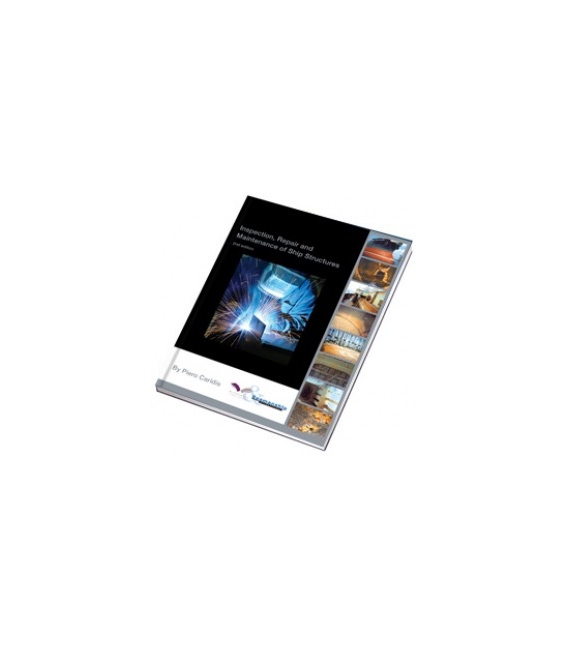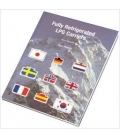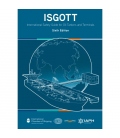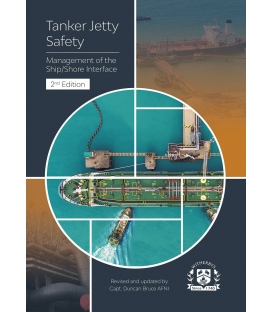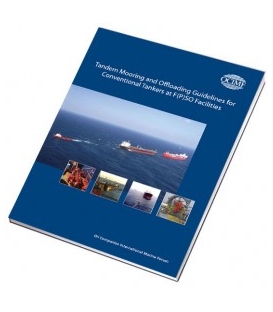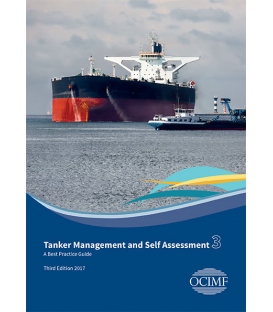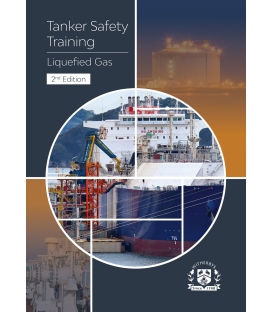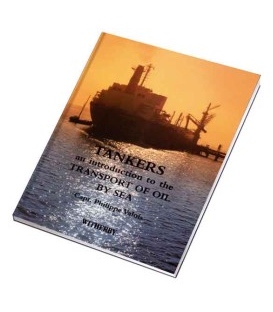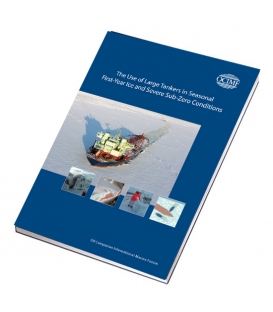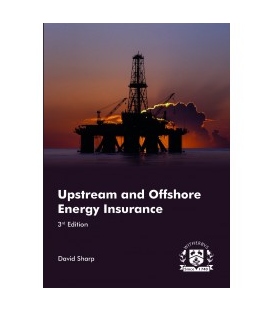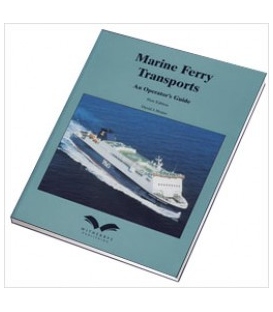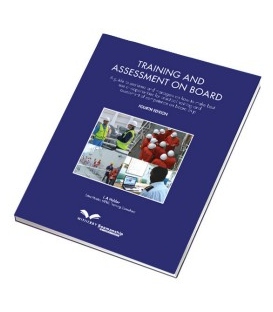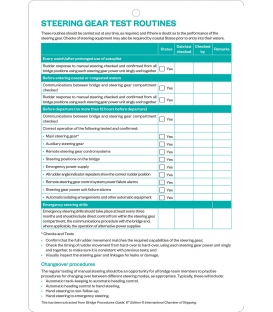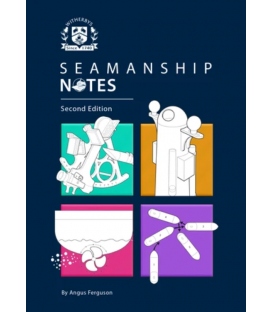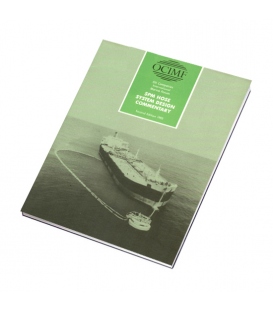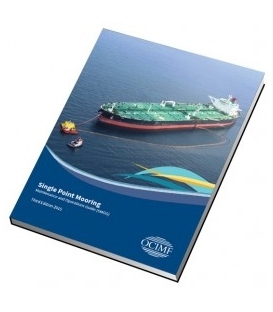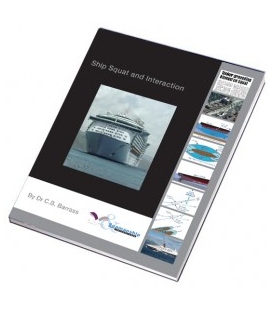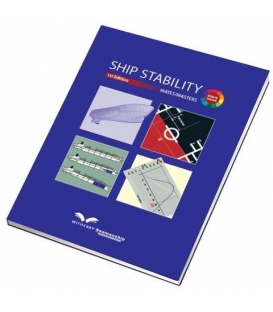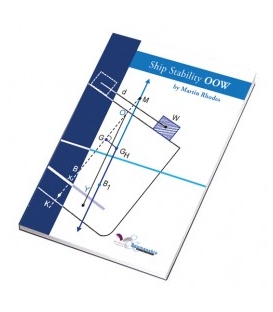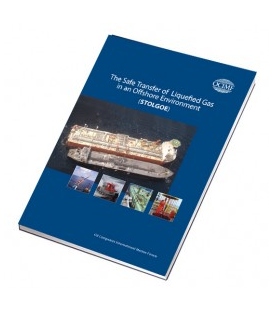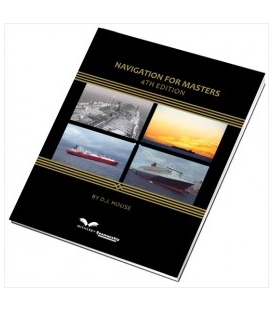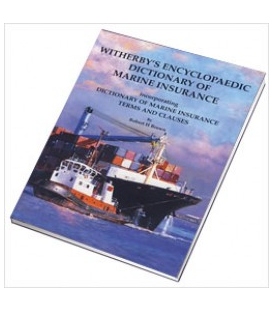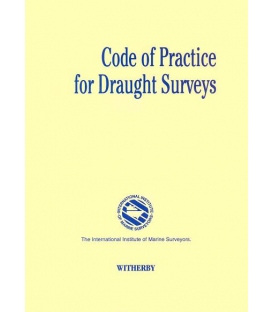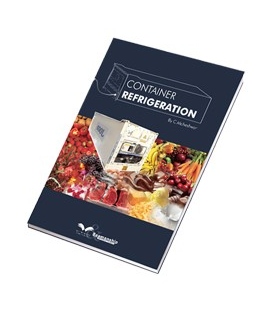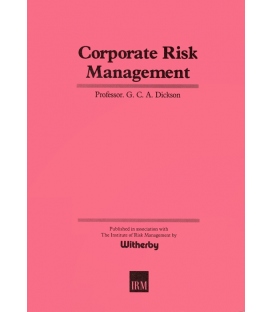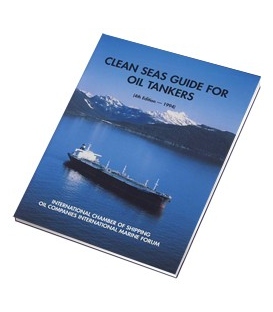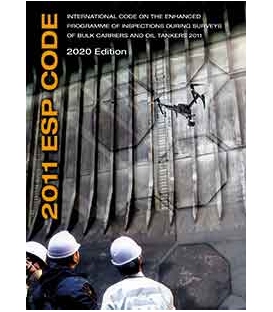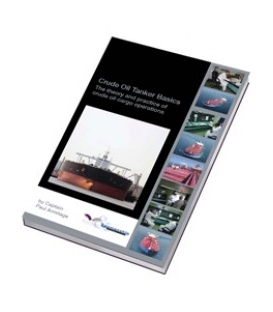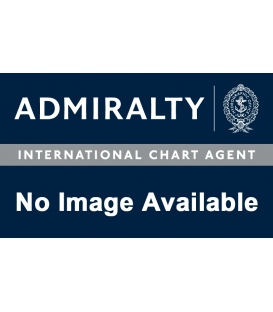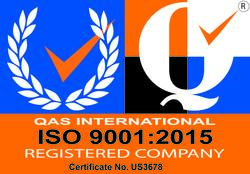

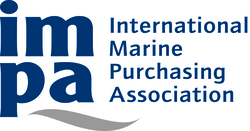
Sign up for our Newsletter
Inspection Repair and Maintenance of Ship Structures 2nd Edition
Number of Pages: 326
Product Code: 4394
ISBN: ISBN 13: 978-1-905331-37-6 (9781905331376), ISBN 10: 1-905331-37-1 (1905331371)
Published Date: February 2009
Binding Format: Paperback
Book Height: 290 mm
Book Width: 210 mm
Book Spine: 20 mm
Weight: 1.30 kg
Author: Piero Caridis
Inspection Repair and Maintenance of Ship Structures 2nd Edition
This book is aimed at people involved in the repair, maintenance and classification of ocean-going merchant ships. Shipyard project managers, marine superintendents and Classification Society surveyors ought to find useful background information on this subject. Younger engineers who are embarking on a career in ship surveying will be provided with an understanding of the phenomena that cause deterioration in the condition of ship structures through time. Finally, students of naval architecture and related disciplines with an interest in ship operations will get a glimpse of the spectrum of problems that may lie in store for them in the future.
In recent years, anyone who has in any way been involved in ship operations, and in particular in repairs, maintenance and surveying, is aware of the precipitous increase in the volume of regulations and international requirements that ship operators are called upon to comply with. Regulations cover all aspects of maritime operations and affect the conventional methods of managing fleets in profound ways. The maritime world is deeply traditional and has evolved steadily through time, with past experience acting as a valuable guide to prospective ventures, whether these are of a technical or of an economic nature. However, recent developments have forced changes in thinking and in the approach to activities such as ship management and the operation of shipping companies themselves.
Recent advances, not least the revolution in information technology, have facilitated progress in ship design and enabled operators to use computer-based tools as an aid to economic decisions. The ability to store and rapidly manipulate large quantities of information has meant that calculations that formerly were prohibitively time-consuming have now become commonplace and are carried out on a routine basis. In the case of ship operations this has had a profound effect The form, size and complexity of modern ships means that huge quantities of data are required to describe their technical characteristics and their various operations. The study of ship-related problems has therefore proved to be a prime candidate for computer-based procedures from the very beginning; during the past two or three decades, procedures have been developed that enable engineers to analyse complex situations rapidly and accurately.
From an early stage computer-based tools were orientated at solving problems related to design or at analysing the response of ships under realistic operating conditions. It is only recently that efforts have been targeted at developing tools that can be of assistance in the repair and maintenance phase of a ship’s life, which after all comprises a significant proportion of the total financial outlay involved.
The recent implementation of the International Safety Management (ISM) Code has made ship operators more aware of the need to rationalise resources and plan the technical management of their fleets in more efficient ways. Of the expenses that relate to repairs and maintenance, the most important are hull structure repairs. Enormous sums of money are spent in hull repairs with very little effort made in planning these expenditures over time in a rational manner. Techniques such as those described in the later chapters of this book can assist in this effort. It is hoped that the economies that can be achieved will assist operators in making ships and the sea a safer and cleaner place as well as ensuring their desired return on investment.
INTRODUCTION
AUTHOR'S PREFACE
ACKNOWLEDGEMENTS
CHAPTER 1 Corrosion of Metal Structures
1.1 A Brief Description of Corrosion Mechanisms
1.2 Types of Corrosion
1.2.1 Uniform or general corrosion
1.2.2 Pitting corrosion
1.2.3 Stress Corrosion Cracking (SCC)
1.2.4 Cavitation erosion - impingement attack
1.2.5 Bacterial corrosion
1.3 Factors that Influence Corrosion
1.3.1 Corrosion and the environment
1.3.2 Corrosion mechanisms in marine structures
1.4 Shipbuilding Materials and their Properties
1.4.1 Steel
1.4.2 Aluminium
1.4.3 Copper
1.4.4 Brass
1.4.5 Copper alloys without zinc
1.4.6 Stainless steels
1.5 Design Against Corrosion
1.6 The Effects of Corrosion on Ships at a Global Scale
References
CHAPTER 2 Fatigue; A HiddenEnemy ofShip Structures
2.2 Fatigue in the Marine Environment
2.3 Factors that Contribute to Fatigue
2.3.1 Loads
2.3.2 Environmental factors
2.3.3 Factors related to materials and fabrication
2.4 The Mathematical Analysis of Fatigue
2.4.1 Classical approach using S-N curves
2.4.2 Fracture mechanics approach to crack initiation
2.4.3 Advantages and disadvantages of fatigue analysis methods
2.5 Fatigue in Ship Structures 2
References
CHAPTER 3 Buckling of Ship Structure
3.1 Loads Acting
on Ship Structures
3.1.1 Classification of loads
3.1.2 Design loads for primary bending strength
3.1.3 Local buckling effects
3.2 The Behaviour of Metals
3.3 The Response of Structural Components Subjected to Compressive Loading
3.3.1 Columns and beam-columns
3.3.2 Flat and stiffened panels
3.4 Two Cases of Hull Girder Failure
3.4.1 Collapse and sinking of a small tanker following longitudinal failure
3.4.2 The loss of a bulk carrier due to overall transverse collapse of the hull girder
References
CHAPTER 4 Fractures in Ship Structures
4.1 Introduction
4.2 Mechanisms of Crack Growth in Metals
4.2.1 Slip, plastic deformations and dislocations
4.2.2 Ductile transgranular fractures by microvoid coalescence
4.2.3 Transgranular brittle fracture (cleavage)
4.2.4 Transgranular fatigue cracks
4.2.5 Intergranular fracture
4.2.6 Sustained load fractures
4.2.7 Fatigue cracks
4.3 Fractures in Ship Structures: General Aspects
4.3.1 Brittle fractures
4.3.2 Ductile fractures and other failures in general cargo vessels
4.3.3 Measures for the avoidance of fatigue cracks
4.3.4 The repair of fractures
References
CHAPTER 5 Damage to the Hull Structure of Bulk Carriers
5.1 Introduction and Overview
5.1.1 Statistical information
5.1.2 Regions of the structure that are prone to frequent damage
5.2 Causes of Damage to Bulk Carriers
5.2.1 The influence of corrosion
5.2.2 Cracks in bulk carrier structures. Some general observations
5.2.3 Other causes of damage. Observations regarding corrosion and fatigue
5.3 Damage in Various Parts of the Structure
5.3.1 Strength deck
5.3.2 Damage to cargo holds
5.3.3 Local design of stiffeners at snip ends. Fatigue strength
References
CHAPTER 6 Damage to the Hull Structure of Oil Tankers
6.1 General
6.2 Corrosion in Oil Tanker Structures
6.2.1 Water ballast tanks
6.2.2 Cargo/clean ballast tanks
6.2.3 Cargo/dirty ballast tanks
6.2.4 Cargo tanks 95
6.3 Integrity of the Structure
Wear and Corrosion
6.3.1 General
6.3.2 Tank bottom structures
6.3.3 Side shell, longitudinal and transverse bulkheads
6.3.4 Strength deck
6.3.5 Corrosion in various parts of tanker structures
6.3.6 Examples
6.4 Fractures and Related Failures in Tanker Structures
6.4.1 Fatigue fractures
6.4.2 Brittle fractures in tankers
6.5 Buckling Collapse in Tanker Structures
6.5.1 Buckling of the strength deck of a 100,000 dwt ton tanker
6.5.2 Hull girder collapse of the VLCC Energy Concentration
References
CHAPTER 7 Surveys and Inspections of the Hull Structure
7.1 Introduction
Purpose and Types of Hull Structure Surveys
7.2 Owner's Surveys
7.2.1 Surveys conducted on behalf of insurers
7.2.2 On-hire surveys
7.2.3 Off-hire surveys
7.2.4 Sale and purchase survey and general condition survey
7.2.5 Damage surveys
7.2.6 Hull structure life extension schemes
7.3 Statutory Surveys
7.3.1 Annual Hull and Machinery Surveys
7.3.2 Intermediate Surveys
7.3.3 Dry-docking Surveys
7.3.4 Hull Special Surveys
7.3.5 Special Surveys of machinery equipment
7.3.6 Boiler Surveys
7.3.7 Tail-shaft Surveys
7.4 Assessment of Survey Data
7.4.1 Assessment method
7.4.2 Integrity of the structure
7.4.3 Acceptance criteria
7.5 The Effect of Corrosion – Inspection, Evaluation and Prediction
7.5.1 General
7.5.2 Background to corrosion surveys on board ships
7.5.3 Corrosion data requirements
7.5.4 Corrosion rate prediction and survey techniques
7.5.5 Thickness measurement using ultrasound techniques
7.6 The Practical Investigation of Fractures in Ship Structures
7.6.1 Preparations for a fracture inspection
7.6.2 The fracture inspection
7.6.3 Circumstances at the time of fracture
7.6.4 Causes of large (brittle) fractures
7.7 Local Buckling in Structural Members
7.8 Effectiveness of Hull Structure Inspections
7.8.1 Scope of the problem
7.8.2 The Probability of Detection (POD) as a measure of inspection effectiveness
7.8.3 Factors affecting inspector performance
7.8.4 A realistic scenario
References
CHAPTER 8 Survey sand Maintenance of Bulk Carrier Structures
8.1 Introduction.
The Requirements of International
Organisations for Bulk Carrier Surveys
8.2 Survey Requirements for Bulk Carrier Structures
8.3 Technical Background of Surveys
8.3.1 General
8.3.2 Nomenclature
8.3.3 Structural damages and deterioration
8.4 Preparation and Execution of Surveys
8.4.1 The survey programme
8.4.2 Principles for planning document
8.4.3 Conditions for survey
8.4.4 Access arrangement and safety
8.4.5 Equipment and tools
8.4.6 Survey at sea or at anchorage
8.4.7 Documentation onboard
8.5 Prevention of Accidents by Owners and Crew
8.5.1 Company practice
8.5.2 Practice onboard vessel
8.5.3 Maintenance of hull structure by crew
8.5.4 Ship operations in port (loading/discharging)
8.5.5 Ship operations (at sea)
8.5.6 Detection of damage
References
CHAPTER 9 Surveys of the Hull Structure of Oil Tankers
9.1 Introduction.
Class and Statutory Requirements
9.2 Vessel Geometry and Nomenclature
9.2.1 Conventional (single skin) oil tankers
9.2.2 Double skin tankers
9.3 Technical Background for Surveys
9.3.1 Structural defects
9.3.2 Critical areas in double hull tankers
9.4 Safety and Access
9.4.1 Safety during surveys
9.4.2 Access to the structure
9.4.3 Access methods for the structure of double skin tankers
9.5 Forms and Procedures for Collection and Reporting
9.5.1 Examples of the IACS Unified Requirements
9.5.2 Planning Booklet for the IACS Enhanced Special Survey
9.5.3 General Condition Survey
9.5.4 Detailed Condition Survey
References
CHAPTER 10 Maintenance Planning. The Use of Protective Coating sand Cathodic Protection
10.1 Basic Concepts of Maintenance Planning
10.1.1 Background
10.1.2 Maintenance of ship structures
10.1.3 Repairs
10.2 Protection of the Hull Structure Using Coatings and Surface Preparation
10.2.1 Preparation methods for metal surfaces
10.2.2 Surface roughness and steel surface preparation
10.2.3 Preparation of aluminium surfaces
10.3 Anticorrosive Coatings
10.3.1 Protection requirements for the various parts of hull structures 21310.3.2 Primers for steel structures
10.4 Antifouling Paints
10.4.1 Action of antifouling paints
10.4.2 Basic types of antifouling paints
10.4.3 Recent legislation concerning the use of organic-metallic antifouling paints
10.5 Classification of Coatings on the Basis of the Binder Used
10.5.1 Paints that have dry oils as a base
10.5.2 Bituminous paints
10.5.3 Alkyd resin paints
10.5.4 Chlorinated rubber (CR) paints
10.5.5 Vinyl paints
10.5.6 Epoxy paints
10.5.7 Coal tar epoxy paints
10.5.8 Polyurethane paints
10.5.9 Polyurethane tar paints
10.5.10 Unsaturated polyester resin coatings
10.5.11 Zinc silicate paints
10.5.12 Silicon resin paints
10.6 Coating Application Techniques
10.6.1 Use of brush and roller
10.6.2 Spraying
10.6.3 Conditions of application of protective coatings
10.7 Film Thickness
10.7.1 Measurement of film thickness
10.7.2 Distribution of membrane thickness
10.7.3 Wet and dry film thickness
10.7.4 Mean film thickness and paint consumption
10.8 Identification of Critical Regions of Hull Structures Due to Corrosion
10.8.1 Anticorrosive coatings in water ballast tanks
10.8.2 Condition of existing ships using corrosion as a criterion
10.8.3 The condition of protective coatings onboard existing ships
10.9 Types of Damage to Protective Coatings
10.9.1 Environmental factors
10.9.2 Damage related to material properties and coating application
10.9.3 Damage due to poor workmanship
10.10 Prediction of the Condition of a Protective Coating Within Water Ballast Tanks
10.11 Coating of a Medium Sized Bulk Carrier During Dry-Docking
10.12 Cathodic Protection of the Hull Structure
10.12.1 The effect of the properties of seawater
10.12.2 Aeration and oxygen content
10.12.3 Effect of variations in temperature and oxygen content
10.12.4 Effect of material and protective coating properties
10.13 Cathodic Protection Below the Waterline
10.13.1 Calculation of the required protection current density
10.13.2 Hull protection using galvanic anodes
10.13.3 Protection using impressed current systems
10.14 Cathodic Protection of Other Regions of the Hull Structure
10.14.1 Interior surfaces of tanks
10.14.2 Bilges
10.14.3 Floating docks
CHAPTER 11 Condition Evaluation and Repair Planning Using a Database Approach
11.1 Data Acquisition
11.1.1 Planning of corrosion surveys and hull structure inspections
11.1.2 Preparations for safety and access during inspections
11.1.3 Instrumentation
11.2 General Requirements of a Ship Structure Database
11.2.1 Data entry
11.2.2 Data types and codes for their classification
11.2.3 Documentation of corrosion parameters
11.3 Repair Planning Using Engineering Economy Calculations
11.3.1 Time value of money. Methods of evaluation and project assessment
11.4 Examples of Use of the Hullcon Database
11.4.1 Condition assessment and evaluation of bulk carrier structures
11.4.2 Repair/maintenance strategic planning for an oil tanker
11.5 Conclusions and Recommendations

